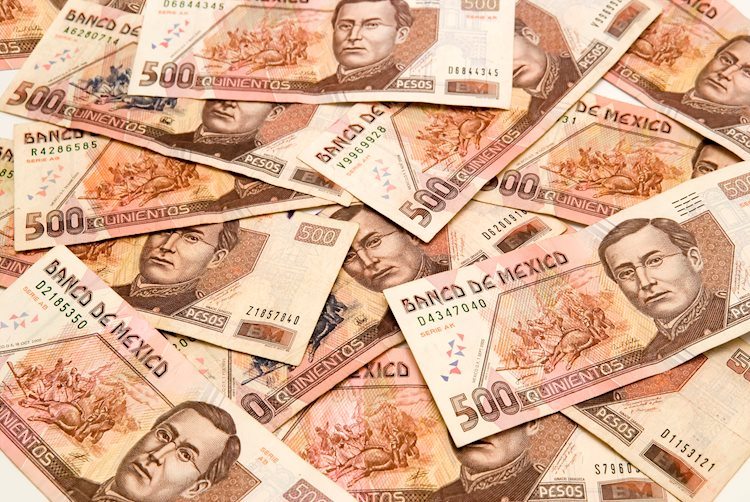The Mexican Peso has faced a 0.20% increase to 19.97 against the US Dollar, hitting a four-week low of 20.14 amidst ongoing political turmoil in Mexico. The lower house decision to approve President Andres Manuel Lopez Obrador’s (AMLO) bill to make changes to the judicial system has weighed on the Peso as it extended its losses for the third consecutive day, finally breaking the psychological barrier of 20.00. The USD/MXN trades at 20.01, up 0.40%, with the market closely monitoring key factors such as Mexico’s upcoming inflation data and US Nonfarm Payrolls (NFP) which could influence further movement of the Peso.
The approval of the judicial reform bill has significant implications for US-Mexico relations and market sentiment, awaiting Senate approval with potential consequences for the currency exchange rate. Morena’s ruling party lacks one vote to secure approval, with the bill then moving to 32 local congresses for further approval. Once the bill is approved in 17 states, changes to the Mexican Constitution will officially be made. US Ambassador Ken Salazar has expressed concerns about the potential damage to relations between Mexico and the United States as a result of the reform bill.
In the context of the US economic docket, recent data releases including the ADP National Employment Change and the ISM and S&P Global Services PMI data have been mixed. While the Greenback initially weakened, it saw a short-lived dip following better-than-expected unemployment benefit numbers. Additionally, the odds for a 50 bps Fed rate cut stand at 39%, with traders now focusing on the release of the August Nonfarm Payrolls report to gauge further market movement.
The Mexican economy has shown signs of slowing due to higher interest rates set by the Bank of Mexico, with most banks expecting a reduction in rates by at least 50 basis points for the remainder of 2024. The depreciation of the Mexican Peso by 17.38% year-to-date has put pressure on the currency. US data including the ADP Employment Change and ISM Services PMI for August have been mixed, with expectations for growth in the US Nonfarm Payrolls and a lower Unemployment Rate in August.
Technical analysis indicates that politics is the main driver of the USD/MXN exchange rate, with the recent approval of the bill weighing on the Peso. The USD/MXN has cleared the 20.00 psychological barrier, signaling potential further weakening of the Peso. The RSI has recorded a new peak, suggesting buying momentum towards the Greenback. If USD/MXN continues to rise, it could target levels such as the September 28, 2022, daily high at 20.57 and potentially test the August 2, 2022 swing high at 20.82. On the other hand, a weakening USD/MXN could find support at 19.50 with further downside towards the 50-day Simple Moving Average (SMA) at 18.65.
The Mexican Peso (MXN) is influenced by various factors including the country’s economic performance, central bank policy, levels of foreign investment, remittances, and geopolitical trends. Mexico’s central bank, Banxico, aims to maintain low and stable inflation levels through appropriate interest rate adjustments. Macroeconomic data releases play a significant role in assessing the state of the economy and impacting MXN valuation. As an emerging-market currency, MXN tends to perform well during risk-on periods and weaken during times of market turbulence or economic uncertainty.











